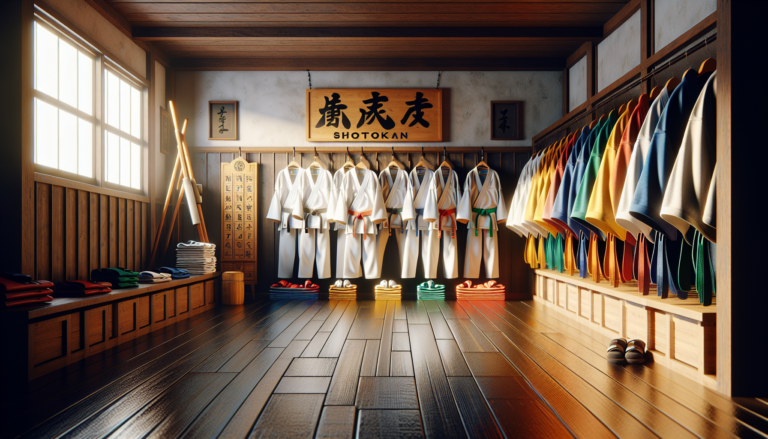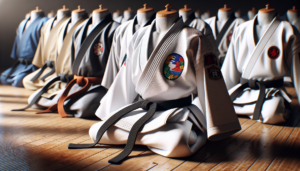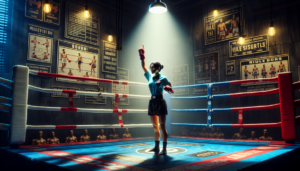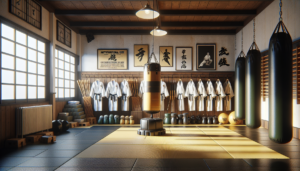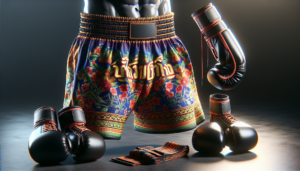Shotokan Karate is a popular martial art that has captivated practitioners worldwide with its dynamic techniques, rich history, and emphasis on character development. Originating from the island of Okinawa and introduced to Japan by Gichin Funakoshi in the early 20th century, Shotokan has become one of the most widely practiced styles of karate. In this article, we will explore the fundamentals of Shotokan Karate, its key principles, training components, and the lasting legacy it has left on the martial arts community.
Introduction to Shotokan Karate
What is Shotokan?
Shotokan Karate is an ’empty hand’ martial art that focuses on powerful, linear techniques and deep, stable stances. The term “Shotokan” is derived from the pen name of its founder, Gichin Funakoshi, and refers to the “house of Shoto.” Shotokan is known for its emphasis on kihon (basic techniques), kata (predetermined forms), and kumite (sparring).
The primary goal of Shotokan Karate is not only to develop physical prowess but also to cultivate character through rigorous training and adherence to a strict moral code. Practitioners, known as karateka, strive to embody the principles of courtesy, integrity, perseverance, self-control, and indomitable spirit both inside and outside the dojo.
The Origins of Shotokan Karate
The roots of Shotokan Karate can be traced back to the island of Okinawa, where indigenous martial arts blended with influences from Chinese combat systems. In the early 20th century, Gichin Funakoshi, an Okinawan karate master, brought his style of karate to mainland Japan, where it gained popularity among universities and eventually spread worldwide.
Funakoshi’s teachings emphasized the importance of character development alongside physical training. He believed that the true essence of karate lay in its ability to mold individuals into responsible, compassionate, and disciplined members of society. This philosophy continues to guide Shotokan practitioners to this day.
Key Principles and Philosophy of Shotokan
The Dojo Kun: Ethical Guidelines
At the heart of Shotokan Karate lies the Dojo Kun, a set of five guiding principles that serve as the ethical foundation for karateka. These principles are:
- Seek perfection of character
- Be faithful
- Endeavor
- Respect others
- Refrain from violent behavior
These tenets are recited at the end of each training session, serving as a reminder of the greater purpose of karate beyond physical technique. By internalizing these values, karateka strive to develop not only as martial artists but also as upstanding members of their communities.
The 20 Precepts of Karate
In addition to the Dojo Kun, Gichin Funakoshi outlined 20 precepts that further guide the moral and spiritual development of Shotokan practitioners. These precepts cover a wide range of topics, from the importance of humility and respect to the cultivation of a calm and clear mind.
Some notable precepts include:
- “Karate begins and ends with respect.”
- “There is no first strike in karate.”
- “Karate stands on the side of justice.”
By adhering to these principles, karateka aim to harmonize their physical training with their mental and spiritual growth, ultimately achieving a state of balance and well-being.
Training Components in Shotokan Karate
Kihon: The Basics
Kihon, or basic techniques, form the foundation of Shotokan Karate. These include stances, blocks, punches, kicks, and strikes, which are practiced repeatedly to develop proper form, power, and control. Kihon training emphasizes the importance of correct body mechanics, breathing, and mental focus.
Kata: Preset Forms
Kata are predetermined sequences of techniques that simulate combat against multiple opponents. Each kata has a specific pattern of movements, and karateka strive to perform them with precision, power, and grace. Kata practice not only helps to ingrain proper technique but also serves as a form of moving meditation, promoting mental clarity and concentration.
Kumite: Sparring
Kumite, or sparring, allows karateka to apply their techniques against live opponents in a controlled setting. Shotokan Kumite ranges from basic drills with a predetermined attack and defense to free sparring, where partners engage in a more dynamic exchange of techniques. Kumite training helps develop timing, distance control, and the ability to adapt to an opponent’s movements.
Training Methods and Techniques
Stances and Movements
Shotokan Karate is characterized by deep, rooted stances that provide stability and power. Stances such as zenkutsu dachi (front stance) and kokutsu dachi (back stance) are fundamental to Shotokan, as they allow karateka to generate force from the ground up. Movements in Shotokan tend to be linear, with an emphasis on strong, decisive techniques.
Self-Defense Applications
While Shotokan Karate is often practiced as a sport, its techniques are rooted in practical self-defense applications. Karateka learn to use their techniques to defend against common attacks such as grabs, punches, and kicks. The principles of distancing, timing, and body positioning are crucial in effectively applying Shotokan techniques in real-world situations.
The Legacy and Influence of Shotokan Karate
Influence on Other Martial Arts
Shotokan Karate has had a significant impact on the development of other martial arts, particularly in the realm of Japanese and Korean styles. Many of the stances, techniques, and training methods found in Shotokan have been adapted and incorporated into other systems, such as Taekwondo, Tang Soo Do, and various forms of kickboxing.
Community and Global Reach
The Shotokan Karate community extends far beyond the borders of Japan, with practitioners and dojos found in nearly every corner of the globe. International organizations such as the Japan Karate Association (JKA) and the International Shotokan Karate Federation (ISKF) help to promote the art and maintain the standards of practice established by Gichin Funakoshi and his successors.
Shotokan Karate continues to attract individuals of all ages and backgrounds, drawn to its emphasis on personal development, discipline, and the pursuit of excellence. Through regular training and adherence to the principles of the Dojo Kun, karateka forge strong bonds with their fellow practitioners, creating a sense of camaraderie and shared purpose.
In conclusion, Shotokan Karate is a martial art that offers practitioners a path to physical, mental, and spiritual growth. By embracing its fundamental principles, techniques, and philosophies, karateka can cultivate a greater sense of self-awareness, confidence, and respect for others. As the legacy of Gichin Funakoshi endures, Shotokan Karate remains a vital and thriving art, enriching the lives of countless individuals around the world.

